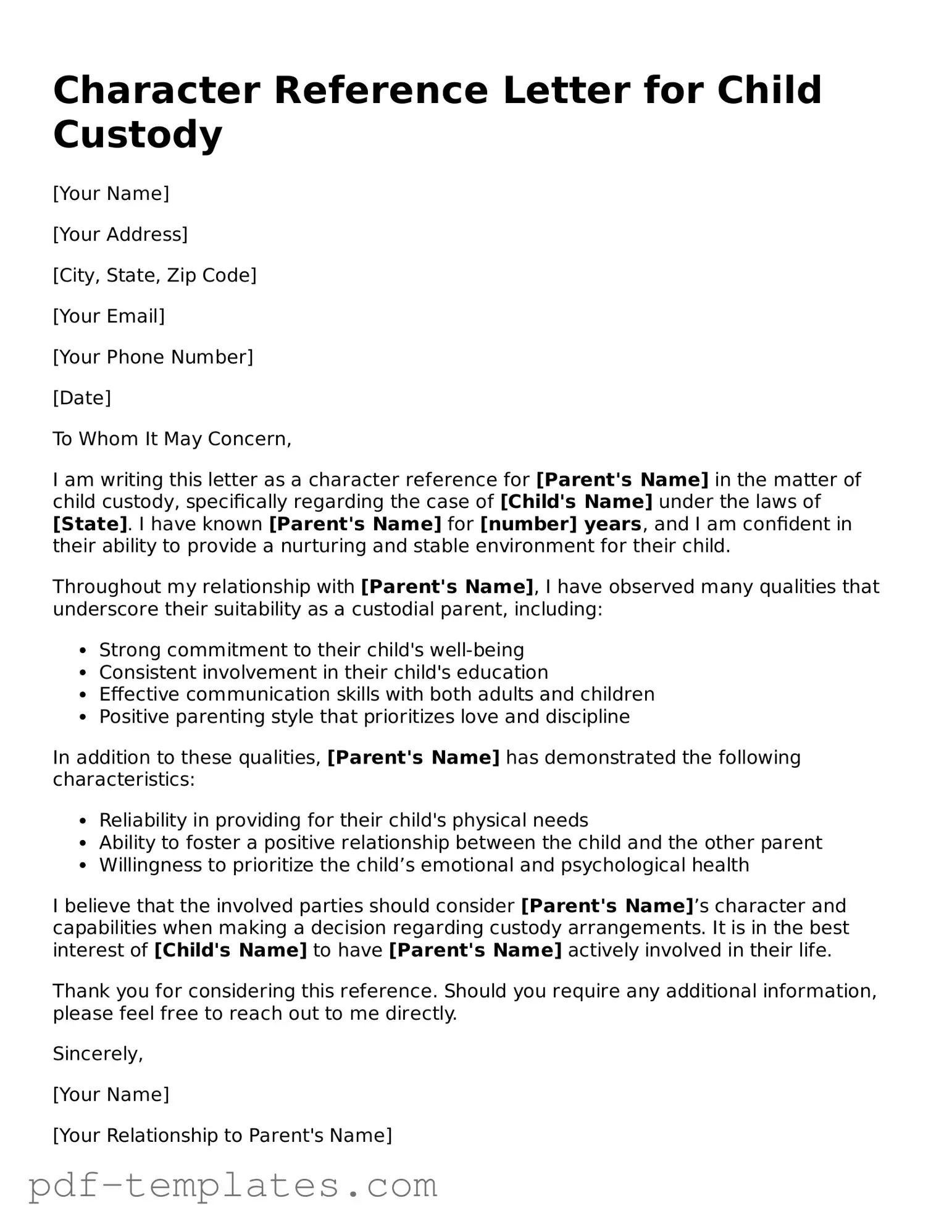The Character Reference Letter for Child Custody serves a unique purpose in family law, but it shares similarities with several other documents that aim to provide insights into an individual's character and suitability for a particular role or responsibility. One such document is the Personal Reference Letter. This letter typically highlights the personal qualities, experiences, and values of the individual being referenced. Like the character reference letter, it focuses on the individual's positive attributes and can be used in various contexts, such as job applications or community service involvement.
Another document that bears resemblance is the Employment Reference Letter. This letter is often provided by a former employer or colleague and details the professional capabilities and work ethic of the individual. While the context differs, both letters emphasize the character traits and reliability of the individual, showcasing their ability to fulfill responsibilities, whether in a job or as a parent.
The Affidavit of Character is also similar in that it serves as a sworn statement regarding an individual's character. This document is typically used in legal contexts and requires the affiant to affirm the truth of their statements under oath. Both the affidavit and the character reference letter aim to establish credibility and trustworthiness, although the affidavit carries a legal weight that the reference letter does not.
Another related document is the Letter of Recommendation. Commonly used in academic or professional settings, this letter provides an assessment of an individual’s skills and character from someone who knows them well. Like the character reference letter, it aims to persuade the reader of the individual’s qualifications, albeit in different contexts.
The Guardian Ad Litem Report is also noteworthy. This document is prepared by a court-appointed advocate who assesses the best interests of a child in custody cases. While it is more formal and detailed, both the report and the character reference letter aim to provide insights into the individual’s suitability as a caregiver, focusing on the child's welfare.
Similarly, the Parenting Plan serves as a comprehensive document outlining how parents will raise their children post-separation or divorce. While it is more structured and detailed, both the parenting plan and the character reference letter address the parenting capabilities of individuals, emphasizing their commitment to the child's best interests.
In addition to the various types of letters previously discussed, utilizing resources such as templates-guide.com/recommendation-letter-template/ can assist individuals in crafting effective Recommendation Letters. These templates provide a structured approach, ensuring that all necessary elements for a strong endorsement are included, thereby enhancing the overall quality and impact of the letter in contexts like job applications or custody evaluations.
Another document that aligns with the character reference letter is the Child Custody Evaluation Report. Conducted by a mental health professional, this report assesses the family dynamics and parental fitness. Both documents aim to provide the court with a clearer understanding of the individuals involved, though the evaluation report is based on professional observations and assessments.
The Statement of Support is yet another document that echoes the intent of the character reference letter. This statement, often submitted in legal proceedings, expresses support for an individual’s character and actions. It serves a similar purpose in bolstering the individual’s reputation and suitability for custody, emphasizing community or familial backing.
Lastly, the Testimonial Letter can also be compared to the character reference letter. This document is often used in various contexts, from legal proceedings to personal matters, to provide a third-party perspective on an individual's character. Both documents aim to lend credibility and support to the individual’s case, although testimonials can be more informal and anecdotal in nature.
